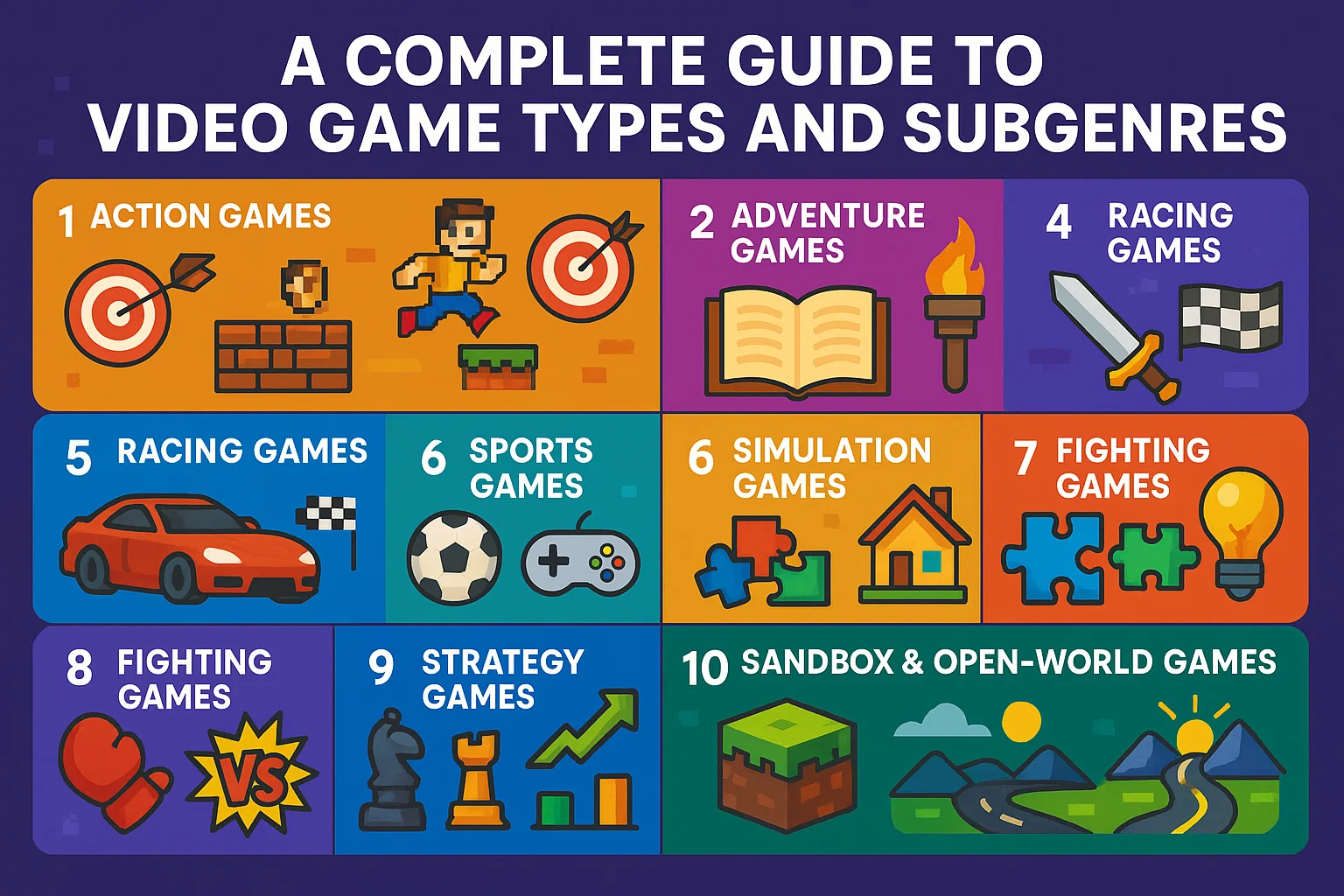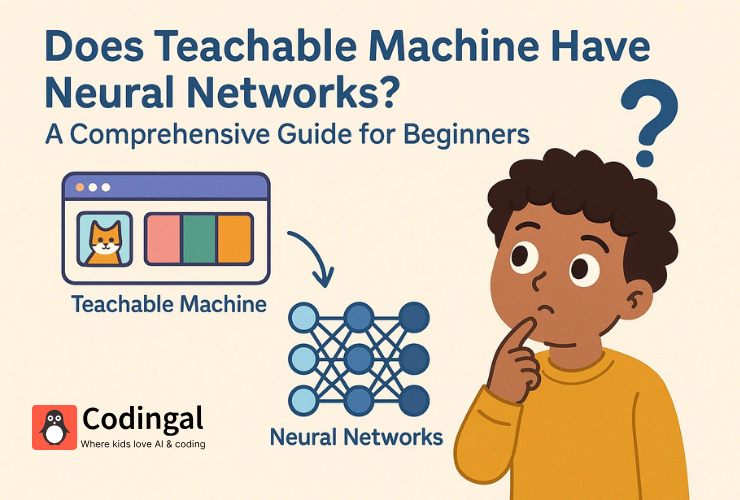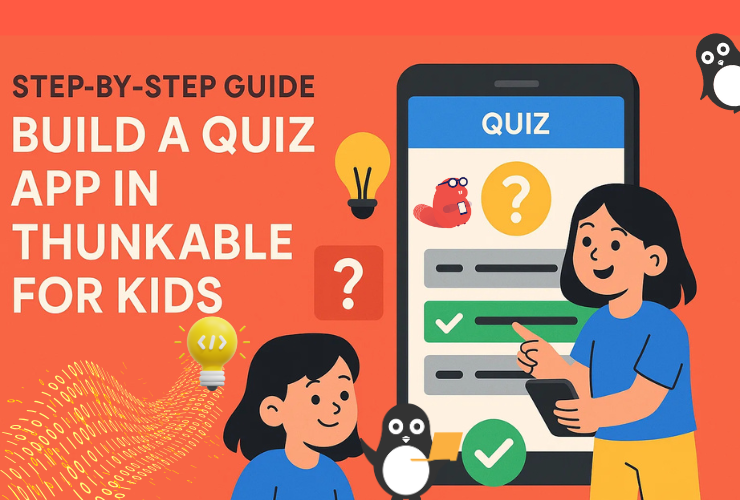Video games have become one of the most popular forms of entertainment and creativity for people of all ages. From classic arcade games to modern open-world adventures, the gaming industry has expanded into dozens of genres and subgenres—each offering a unique experience. Understanding these categories not only helps players choose the right games but also gives aspiring game developers ideas for creating their own.
In this blog, we’ll explore the main video game genres and their most exciting subgenres, with examples you may already know and love.
🎯 1. Action Games
Action games are all about fast-paced gameplay, quick reflexes, and combat mechanics.
Subgenres of Action Games:
- Platformers: Players jump and run through levels. Examples: Super Mario Bros., Celeste.
- Beat ’em Ups / Hack and Slash: Focused on melee combat. Examples: Streets of Rage, Devil May Cry.
- Shooter (FPS/TPS): Use firearms in first- or third-person perspective. Examples: Call of Duty, Fortnite, Overwatch.
- Stealth Games: Players avoid detection while completing objectives. Examples: Metal Gear Solid, Hitman.
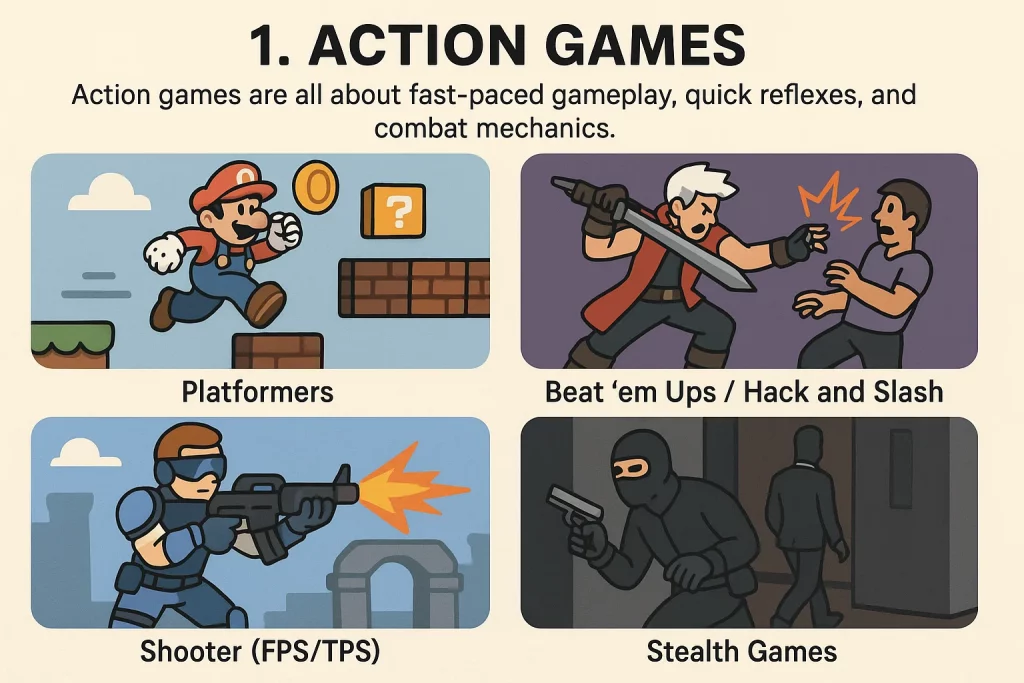
🧩 2. Adventure Games
Adventure games emphasize storytelling, exploration, and puzzles rather than combat.
Subgenres of Adventure Games:
- Text-Based Adventures: The earliest form of interactive storytelling. Example: Zork.
- Graphic Adventures: Point-and-click style with visuals. Example: Monkey Island.
- Visual Novels: Story-driven with multiple dialogue choices. Examples: Doki Doki Literature Club, Phoenix Wright.
- Walking Simulators: Focus on atmosphere and narrative. Examples: Firewatch, Journey.
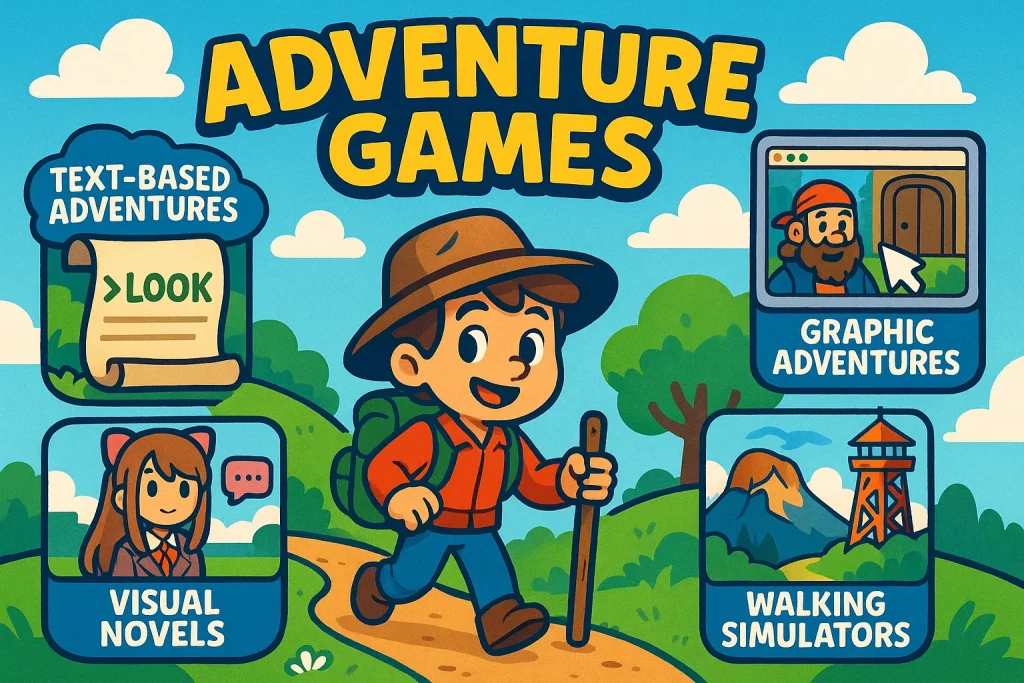
⚔️ 3. Role-Playing Games (RPGs)
RPGs allow players to take on the role of a character, progressing through quests and leveling up.
Subgenres of RPGs:
- Action RPGs (ARPG): Real-time combat with RPG mechanics. Examples: Diablo, The Witcher 3.
- JRPGs (Japanese RPGs): Story-driven with turn-based battles. Examples: Final Fantasy, Persona.
- Western RPGs: Player-driven choices and open exploration. Examples: Skyrim, Mass Effect.
- MMORPGs: Massive multiplayer online RPGs. Examples: World of Warcraft, Final Fantasy XIV.
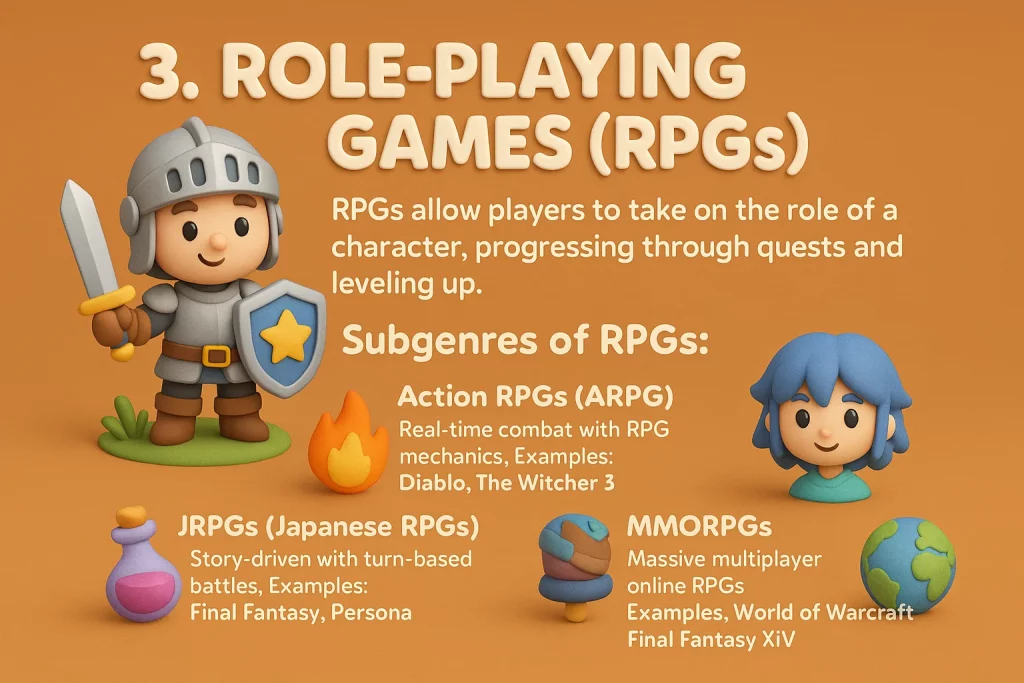
🏁 4. Racing Games
Racing games test speed, precision, and control on different terrains.
Subgenres of Racing Games:
- Arcade Racers: Fun, over-the-top racing. Examples: Mario Kart, Need for Speed.
- Simulation Racers: Realistic driving mechanics. Examples: Gran Turismo, Forza Motorsport.
- Kart Racers: Colorful tracks with power-ups. Examples: Crash Team Racing, Sonic & All-Stars Racing.
🏟️ 5. Sports Games
Sports games simulate real-world or fantasy sports.
Subgenres of Sports Games:
- Traditional Sports: Football, basketball, cricket, etc. Examples: FIFA, NBA 2K, EA Cricket.
- Extreme Sports: Skateboarding, snowboarding. Examples: Tony Hawk’s Pro Skater, SSX.
- Fantasy/Arcade Sports: Simplified or fictional sports. Examples: Rocket League, Mario Tennis.
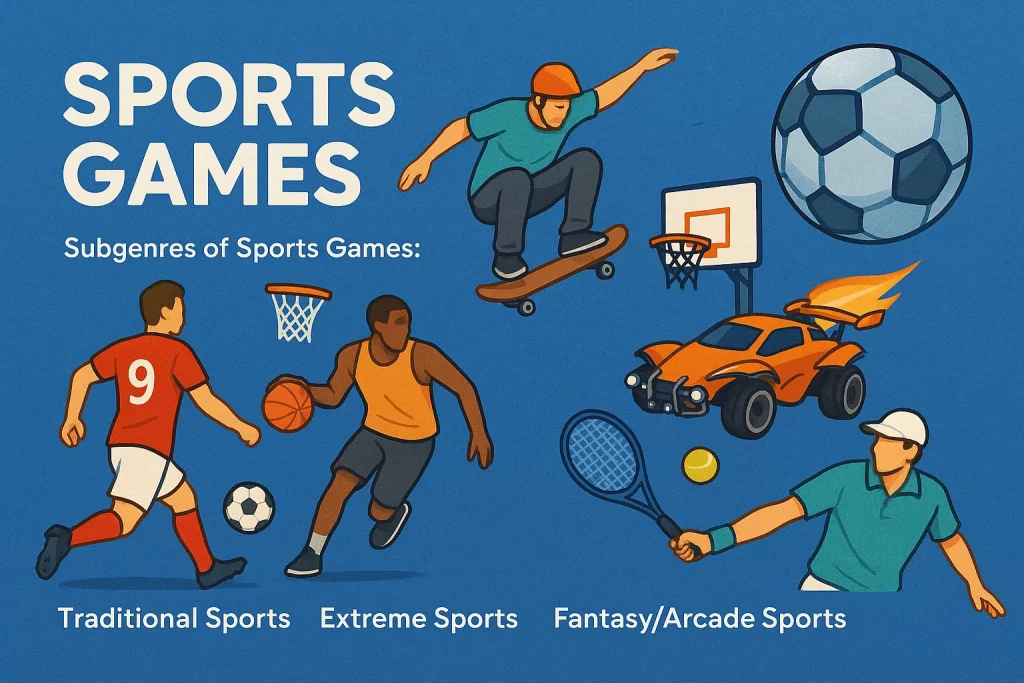
🏗️ 6. Simulation Games
Simulation games aim to replicate real-life experiences in virtual form.
Subgenres of Simulation Games:
- Life Simulation: Manage people’s lives. Examples: The Sims, Animal Crossing.
- City-Building: Build and manage cities. Examples: SimCity, Cities: Skylines.
- Flight/Driving Sims: Realistic piloting or driving. Examples: Microsoft Flight Simulator, Euro Truck Simulator.
- Business/Tycoon: Build companies and economies. Examples: RollerCoaster Tycoon, Zoo Tycoon.
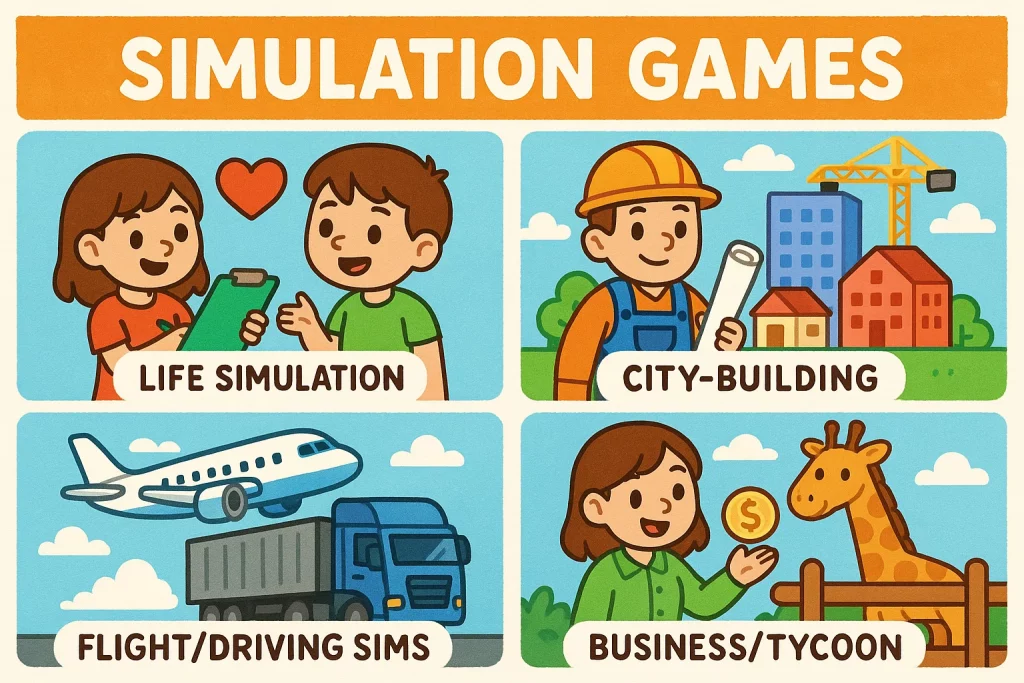
🧠 7. Puzzle Games
Puzzle games test logic, problem-solving, and creativity.
Subgenres of Puzzle Games:
- Match-3: Simple pattern matching. Examples: Candy Crush, Bejeweled.
- Physics Puzzles: Use physics-based mechanics. Examples: Angry Birds, Portal.
- Word/Number Puzzles: Scrabble, Sudoku-style games. Examples: Wordle, Brain Age.
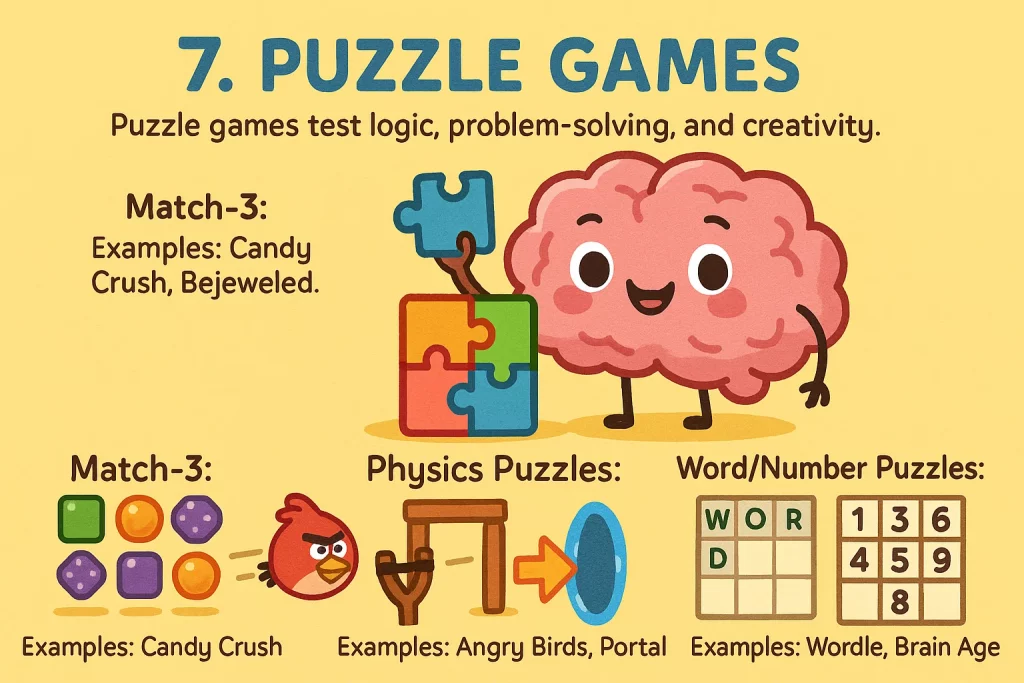
⚔️ 8. Fighting Games
Fighting games focus on 1v1 combat with combos and special moves.
Subgenres of Fighting Games:
- 2D Fighters: Side-view with combos. Examples: Street Fighter, Mortal Kombat.
- 3D Fighters: Full movement arena battles. Examples: Tekken, Soulcalibur.
- Platform Fighters: Characters battle on dynamic platforms. Example: Super Smash Bros.
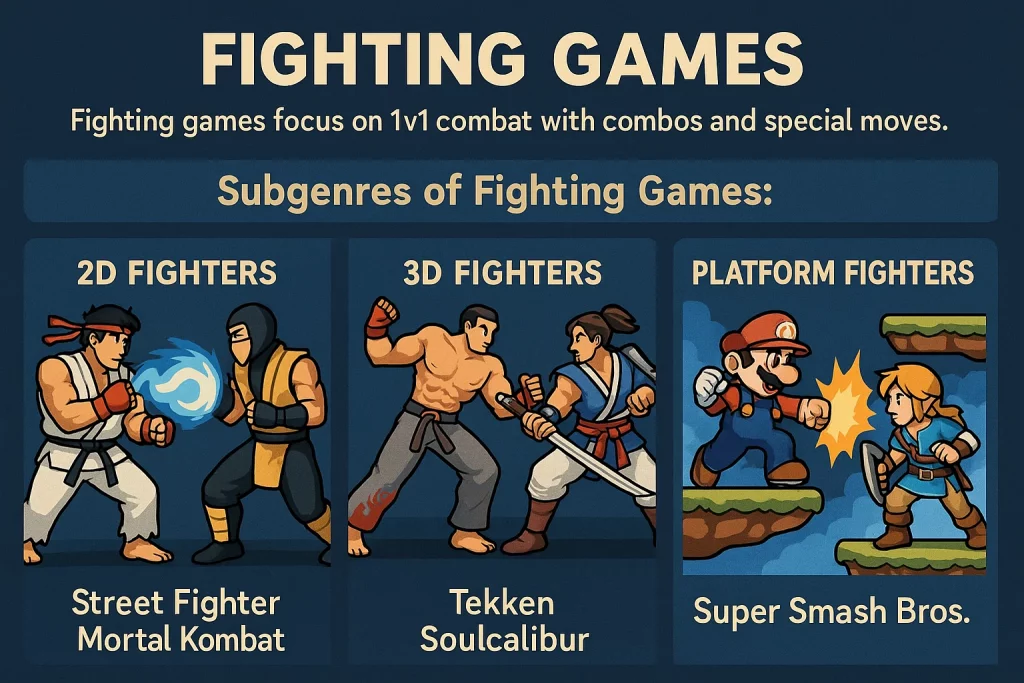
🕹️ 9. Strategy Games
Strategy games require planning, tactics, and resource management.
Subgenres of Strategy Games:
- RTS (Real-Time Strategy): Manage resources and armies in real time. Examples: StarCraft, Age of Empires.
- TBS (Turn-Based Strategy): Players take turns making moves. Examples: Civilization, XCOM.
- Tower Defense: Defend against waves of enemies. Examples: Plants vs. Zombies, Bloons TD.
- MOBA (Multiplayer Online Battle Arena): Team-based battles with strategy. Examples: League of Legends, Dota 2.
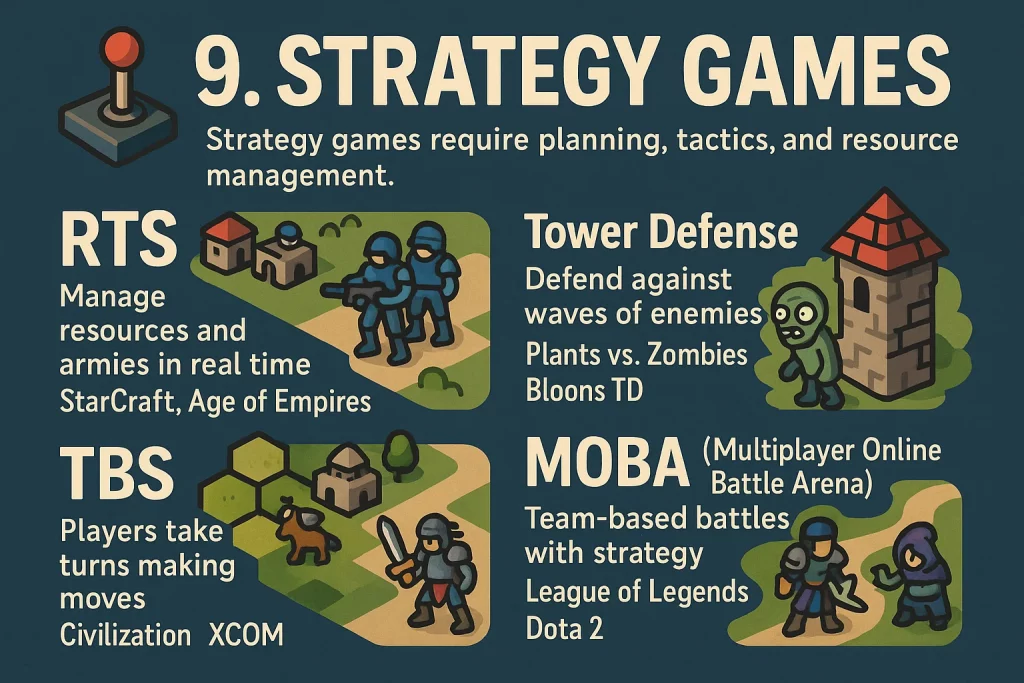
🌍 10. Sandbox & Open-World Games
Sandbox games allow players to explore freely and create their own stories.
Subgenres of Sandbox/Open-World Games:
- Survival Games: Gather resources to survive. Examples: Minecraft, Rust.
- Building Games: Focus on creativity and design. Examples: Roblox, Terraria.
- Open-World Action: Vast exploration with missions. Examples: GTA V, Red Dead Redemption 2.
🎮 Conclusion
Video games are not just about playing—they’re about exploring creativity, problem-solving, and strategy across different genres. Each subgenre offers something unique, from fast-paced action to thoughtful storytelling.
And for kids who are fascinated by how games are made, learning coding is the first step toward creating their own. Platforms like Codingal help children learn game development using Scratch, Python, and even AI tools—turning players into creators.
✨ Book a coding class with Codingal today and let your child take the first step toward building the games of the future!
